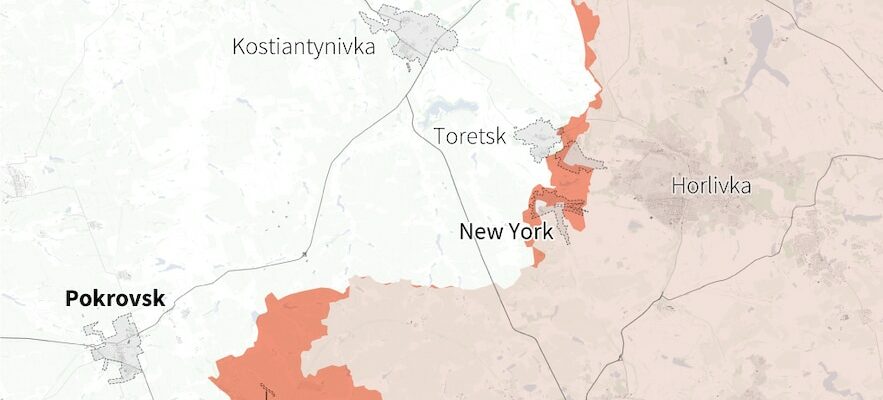The testimonies tell of the same heartbreak. This concerns Ania Dvoryaninova, a 35-year-old Ukrainian woman, who confided to AFP that she did not want to leave her “beloved Donbass”. Of Nina Uvarova, 84, who after having already had to flee the region when she was two and a half years old in the face of the Nazi advance, must once again escape another imperialism, Russian this time, as she tells The Economist. Or Maryna, 33 years old and with three children under her arm, who tells the Guardian “feeling only sadness” while fearing for the safety of those who choose to stay.
Since the Ukrainian authorities ordered the evacuation of families with children from the city of Pokrovsk on August 19, trains carrying civilians to the west of the country have been following one another. Because the Russian threat is only getting closer. This Wednesday, August 28, Volodymyr Zelensky confirmed that the situation was “extremely difficult” in the Donetsk region, and in particular near Pokrovsk. And this Thursday, Russian forces announced the capture of a new nearby town, Mykolaivka, continuing their rapprochement just ten kilometers from the city.
Map showing areas where Russian forces have advanced towards Pokrovsk in Ukraine’s Donetsk region as of August 28
© / AFP
The noose seems to be tightening around kyiv’s forces, and the precedents of Bakhmut, Mariupol or Avdiivka, left in ruins by Russia, are not there to reassure. “We do not know exactly why the Russian general staff is focusing so persistently on this locality. It may be that it has specific considerations. In my opinion, the issue is that Pokrovsk is the largest city in the west of the Donetsk region,” explains Vladyslav Seleznov, military expert and former spokesman for the General Staff of the Ukrainian Armed Forces, to Ukrainian news agency RBC.
“The Gateway to Donetsk”
There is no shortage of reasons, however, to explain why Russia seems so keen on conquering Pokrovsk. A city of nearly 60,000 inhabitants before the start of the war, it is notably a very important rail and road junction for Ukraine. It is notably through here that a large part of the Ukrainian supplies circulate to the other points of tension in the Donbass, whether it be the industrial city of Chassiv Yar or the city of Kostiantynivka, places of very intense fighting.
While Pokrovsk is even nicknamed the “gateway to Donetsk” by the Russian media, breaking it would allow Moscow to significantly disrupt Ukrainian supplies on the rest of the front. And to advance ever further towards one of their key objectives for this war: the complete conquest of the Donetsk region.
A few kilometers west of Pokrovsk is also a highly strategic target: one of the largest Ukrainian coal mines. As explained The Guardianthis plant is the only place in Ukraine that produces high-quality coking coal, essential for steelmaking and therefore crucial to the Ukrainian war effort.
“People are not made of steel”
This advance towards Pokrovsk thus seems to have become the absolute priority of the Russian army. And what does the Ukrainian breakthrough at Kursk matter, partly triggered with the hope that it would force part of the Russian troops to leave eastern Ukraine to defend their soil. Not only does no Russian soldier seem to have been withdrawn from the front, but “the most combat-ready Russian troops are currently supporting the Russian advances towards Pokrovsk,” confirms Institute for the Study of Warwhich analyzes the evolution of the fighting on a day-to-day basis. Enough to confirm “the theory of victory in Ukraine formulated by Russian President Vladimir Putin, which assumes that Russian forces retain the initiative and pursue a constant war of attrition to overcome Ukraine and its partners,” they continue in their daily report of August 27.
This breakthrough, however, is not without a very heavy human cost for Putin’s forces, like the very costly battle of Avdiivka, where Russian forces were losing more than 1,000 men per day at the peak of the fighting. “The head of Ukrainian military intelligence, Kyrylo Budanov, had bet that the Russian offensive would be exhausted in one or two months. Two weeks have already passed. Will Putin’s army succeed in defeating the Ukrainian resistance in just over a month?” wonders Vladyslav Seleznov.
But on the other side of the front, imagining an unshakable Ukrainian defense line seems at best naive, at worst completely disconnected. kyiv’s forces still report that Russian soldiers fire ten times more shells than they do, and that the human balance of power is around one Ukrainian soldier for every four Russian soldiers. And that’s without taking into account the general exhaustion of the troops, due to the lack of renewal of forces, as reported by The Economist.
One fighter, “Dublin,” explains that some soldiers stay on the front lines for up to 40 days at a time, and that two of them have suffered strokes there. Ukraine’s problems are made worse by “idiotic” orders, he explains. “People are not made of steel,” insists Colonel Pavlo Fedosenko. Yet that is almost what it would take to hope to permanently repel the incessant Russian human waves.
